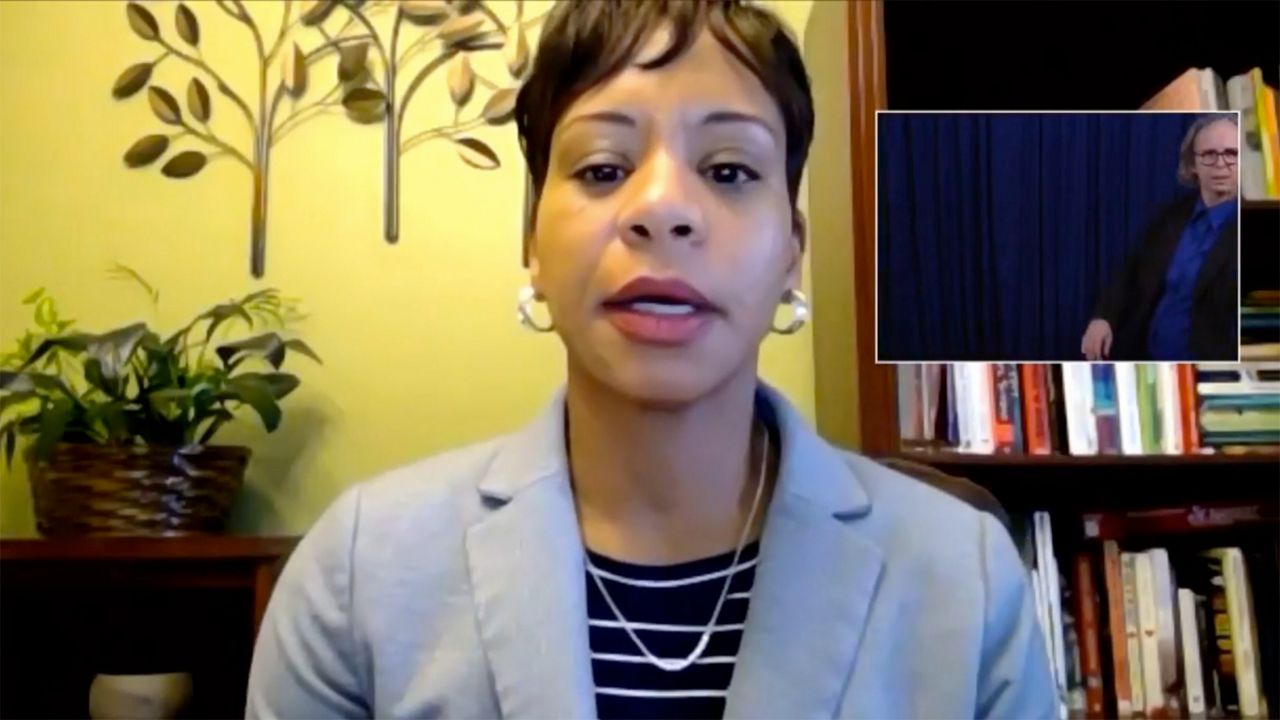COLUMBUS, Ohio — Banking and insurance companies have loaned executives to the state to improve its overwhelmed unemployment system, which has been impacted by hundreds of thousands of fraudulent claims on top of all the legitimate claims that are filed.
Fifth Third Bank, Nationwide Insurance, Western & Southern Financial Group, Encova Insurance, and KeyBank are assigning executives to work on the effort, which will examine near and long-term fixes, officials said.
“We have a laser focus on this, and we’re going to stay on it,” Gov. Mike DeWine said Thursday, announcing the partnership.
The experts will help the state human services agency to address problems with the jobless claims system. The salaries of the 16 individuals in the public-private partnership will be covered by their employers.
Over the past 45 weeks, the state’s Human Services agency has distributed more than $8 billion in unemployment compensation payments to more than 908,000 Ohioans. But the system has also been plagued by delays and complaints from people on the phone for hours, unable to get help.
The 3.6 million unemployment claims filed during the pandemic are more than filed during the recessions of 1991, 2002, and 2009 combined, said Kimberly Henderson, director of the Ohio Department of Job and Family Services.
“We are committed to getting every eligible Ohioan the unemployment benefits they need,” Henderson said Thursday. “This new partnership will able the unemployment office to improve in the most critical areas that we are facing right now: answering every call, processing claims, and addressing fraud.”
The partnership will be led by the CEO of Ohio Business Roundtable, former Ohio congressman Pat Tiberi. The team will report to Henderson.
The state needed experts with experience running call centers and others with experience in fraud detection, DeWine said.
In a statement provided before DeWine’s announcement, the union representing human services workers blamed private contractors hired during the pandemic for overpayments and fraudulent claims. That, in turn, led to more work for state employees, the union said.
“The slow-down of unemployment claims rests squarely on the shoulders of these private vendors,” said Chris Mabe, president of the Ohio Civil Service Employees Association.
The state contracts with private vendors, as well as employs an internal IT team to help manage its unemployment systems. The regular unemployment system is COBOL-based and does not operate using cloud technology. Pandemic Unemployment Assistance (PUA) claims are processed in a separate cloud-based system, provided through a contract with Deloitte Consulting. Between both systems, more than $332 million in fraudulent overpayments were reported, with $330 million in fraud coming from PUA claims.
Though the state does do checks and audits for fraud in both systems, private sector experts said more could be done to protect Ohioans’ data, and dramatically reduce fraud. Chief Executive Officer of Government for LexisNexis Risk Solutions, Haywood Talcove, works with public and private organizations on risk aversion and fraud prevention. Talcove said the technology necessary to prevent fraud already exists in the banking and online retail sector.
"The key to this right now and every state has to do it is put in a front-end identity fraud filter. It's inexpensive,” said Talcove, whose company provides such solutions to government and private organizations. “It's quick and it allows citizens to get their benefits really fast."
Front end identity filters use public records information to verify users in real-time, and are used often when purchasing items online, or conducting transactions online with financial institutions. Haywood estimates that states implementing the technology could have saved around $100 billion in transnational financial fraud.
“I don't think they ever anticipated unemployment going from 3.5% to 15% in less than a week,” said Talcove, who estimates that identity verification technology would cost around $1 million to implement. “And so they haven't necessarily used these tools that citizens are used to when you go to Amazon and you make a purchase or you go on to your bank and you try to transfer money or see what your balance is.”
The state said Thursday that initial claims for unemployment dipped slightly last week. But continued jobless claims, continued a more accurate sign of the economy’s strength, ticked up.
This week, the state has paid out nearly $100 million in unemployment to more than 110,000 people, and residents began receiving unemployment money they are owed from the federal relief approved at the end of 2020, DeWine said.
“This represents some extended weeks of benefits plus an additional $300 a week which were included with a new federal bill that was signed in December,” DeWine said.
Starting Feb. 6, more than 155,000 Ohioans will begin receiving funds from the latest unemployment package, DeWine said.
By the end of February, all residents can expect to receive the benefits they are owed, the governor said.
Pete Grieve and Orie Givens contributed to this report.







